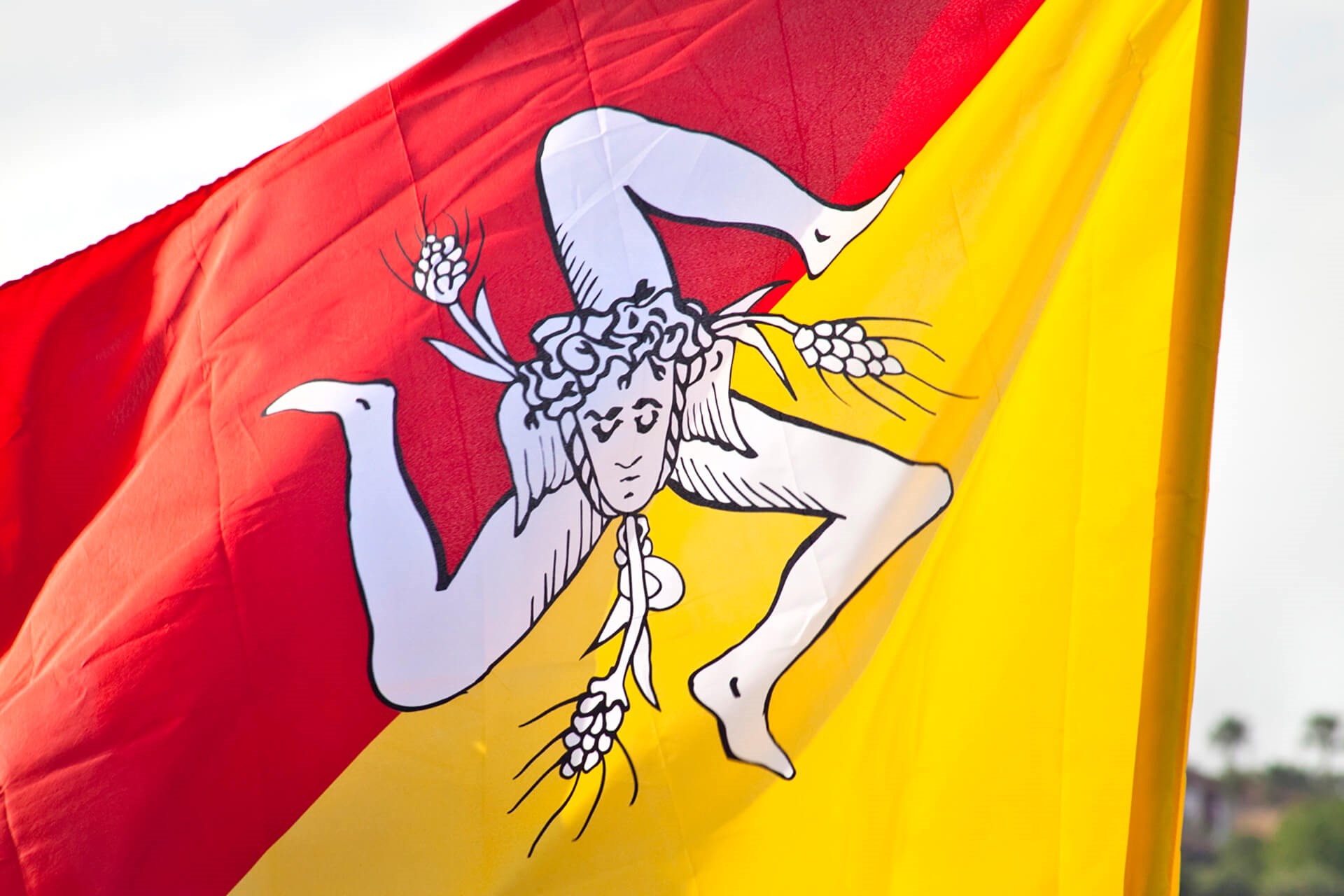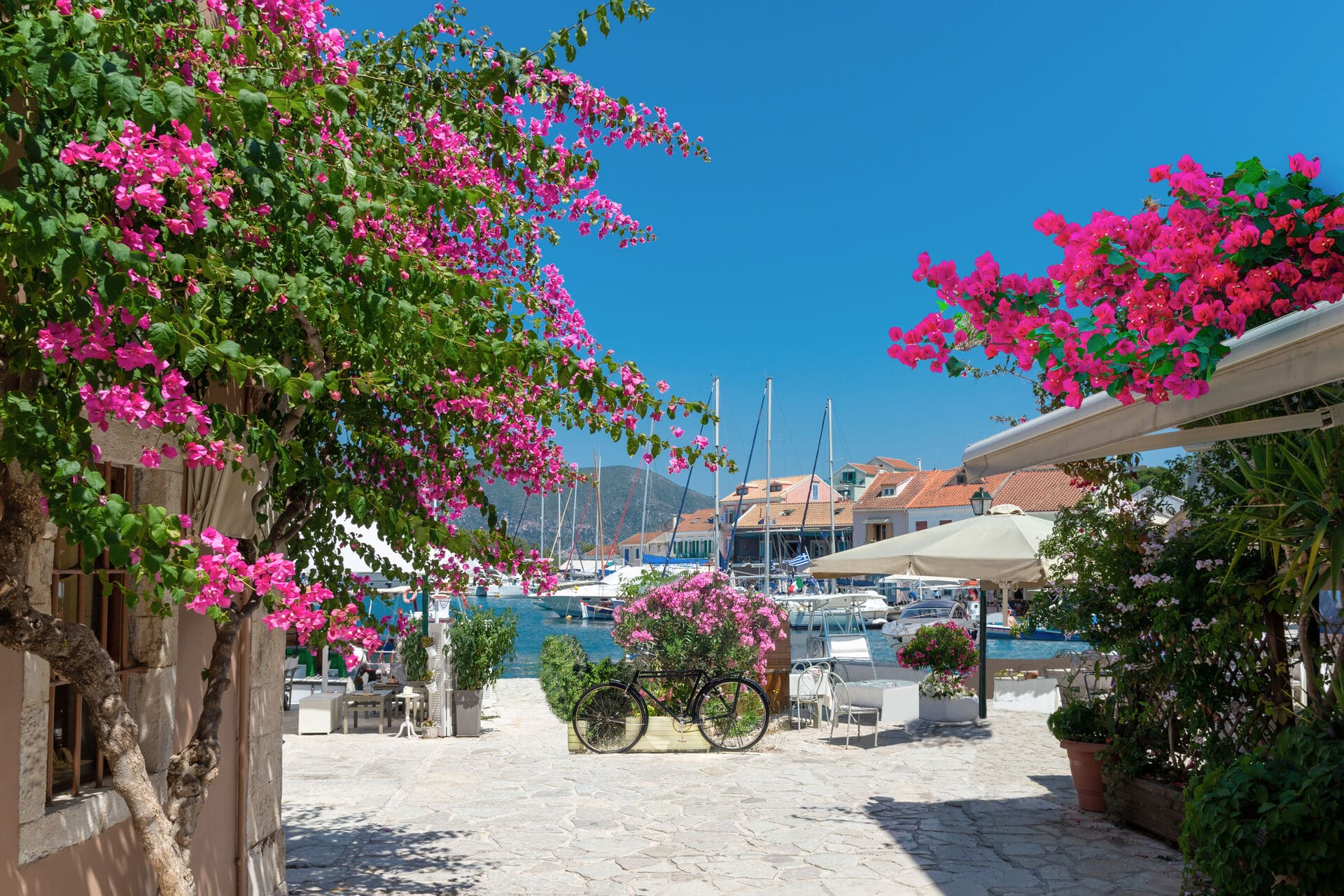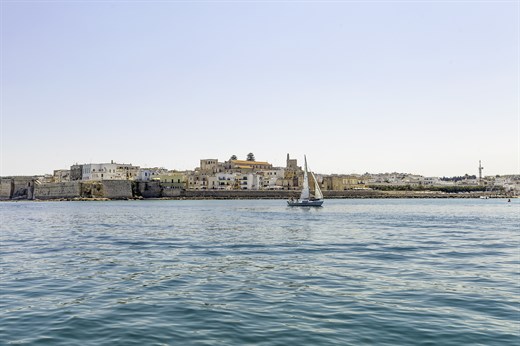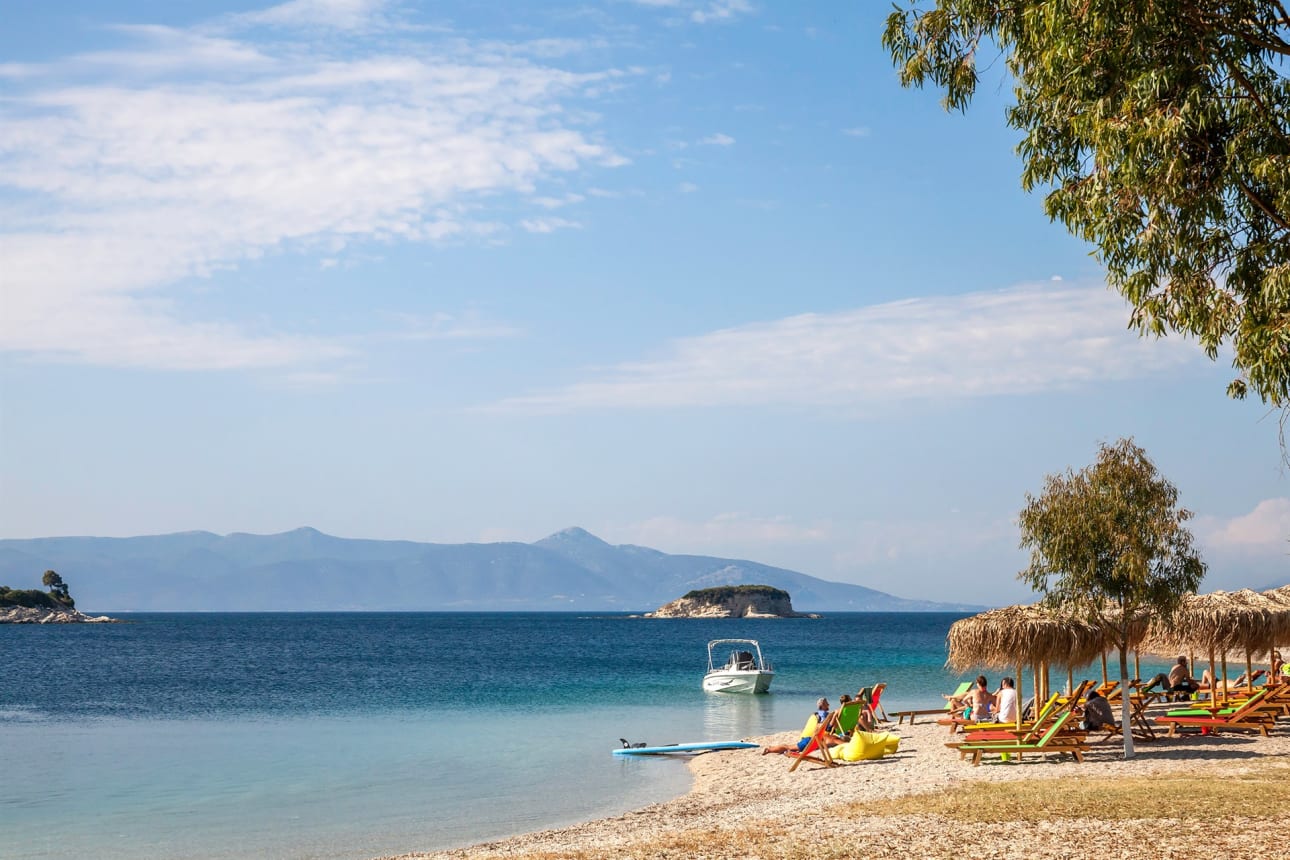by Max Lane
3 min read
Visiting Sicily: the Sicilian flag

Read about the long history and symbolism of the regional Sicilian flag, as well as where you may encounter it on your trip to Sicily.
Table of contents
When visiting Sicily, you’ll likely notice lots of fascinating cultural and historical wonders, from ancient ruins and archaeological sites to architectural wonders. However, one of the most fascinating pieces of Sicilian history is its flag, which has a long history dating back at least until the Sicilian Vespers in 1282.Get inspired by Sicily here
The colours of the Sicilian flag
The two main colours, red and yellow, represent Palermo and Corleone, the two founding cities of the confederation against the Angevins. Historically, Corleone was one of the island's most important agricultural centres.The symbolism of Medusa: Why is Medusa on the Sicilian flag?
The three legs of the central figure represent a trinacria, or triangle, from the Greek name for Sicily, Trinacria, as well as the island's three corners: Peloro (northeast), Passero (southeast), and Lilibeo (west).
Bent at the knee, the three legs form a spiral of rotational symmetry, a form that is also present on the 1945 Sicilian flag of independence. The emblem as a whole can be found on coins from Syracuse in the 4th century BCE.The face depicted in the centre was originally that of Medusa, a reference to the protectress of Sicily, the goddess Athena, who had the head of the gorgon on her shield. Since 2000, however, the deadly gaze of Medusa has been softened.
Working in tandem with the three legs are three ears of wheat, a representation of Sicily's fertility. The final element, a pair of wings, signifies freedom.
Modern uses of the flag of Sicily
Modern Sicilian history surrounding the flag is fascinating. During the Sicilian Vespers the flag became the true symbol of Sicily's unity against the Angevin French. At Messina, the colours took on even greater significance, as Sicilians flooded there to defend against the advance of the Papal army sent to reinstate the disgraced Angevins. The flag was draped over the city's walls and the Sicilians survived the five-month siege. In reference to this victory, Messina's football team still wears red and yellow stripes.In 2000, the Regional Government of Sicily adopted the flag, and since then it has hung from all official buildings.
To learn more about Sicilian culture ahead of your visit to the island, read our travel guide to Sicily or our Sicily food and wine guide, or contact our team of experts for more information. We can help you discover the history, architecture and unique elements that make Sicily unmissable.


.jpg)
/ttt_greece_corinth_aetos_oct24_017.jpg)